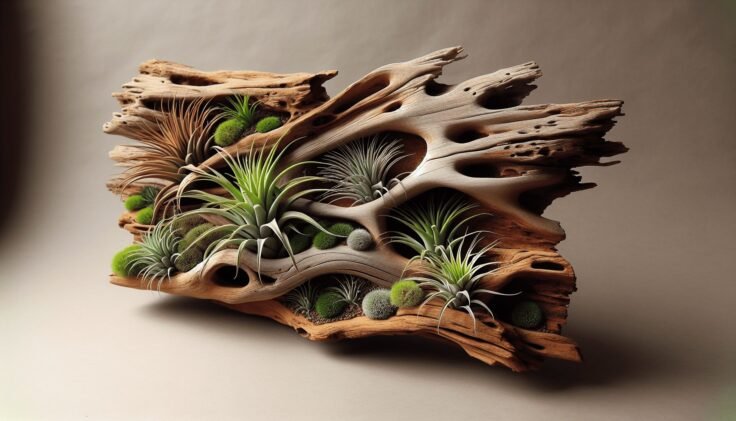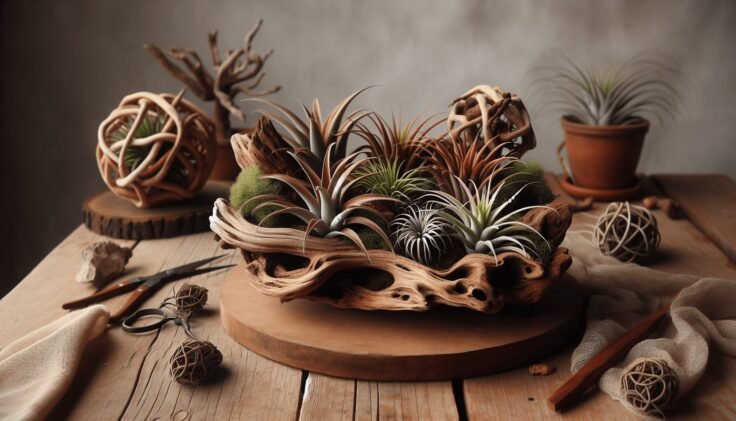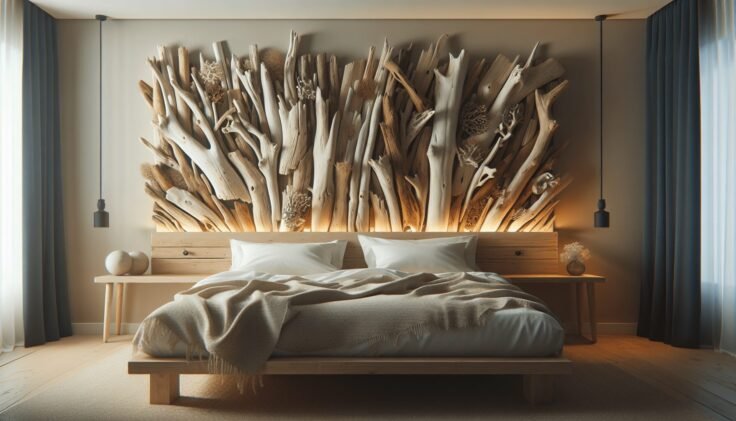Have you ever wandered along the beach and wondered what to do with the pieces of driftwood scattered along the shore? Driftwood has a unique charm and character, which makes it a perfect material for creative DIY projects. Its naturally weathered texture and variations in shape can add a touch of rustic elegance to your home decor or serve as one-of-a-kind functional art.

What is Driftwood?
Driftwood is wood that has been washed onto a shore or beach by the action of winds, tides, or waves. Originating from various sources—such as trees, bushes, or man-made structures—driftwood undergoes natural processes that give it a distinctive look. This makes it highly appealing for many DIY enthusiasts and artists seeking to bring a bit of nature into their creations.
Characteristics of Driftwood
Driftwood’s characteristics make it appealing for various projects. Its natural texture, varied shapes, and the presence of knots and knots can become the centerpiece of a creative piece. Depending on where it’s found, driftwood can be bleached by the sun or darker in tone due to water exposure. Its lightweight yet sturdy structure makes it an excellent choice for constructing decorative items.
Preparing Driftwood for DIY Projects
Before starting your project, it’s crucial to prepare your driftwood properly. This ensures it’s safe and durable for whatever you plan to create.
Cleaning Driftwood
To clean driftwood, first, give it a good rinse with fresh water to remove any sand, salt, or debris. Based on its size, you might soak the wood in a solution of one-part vinegar to nine parts water for a day or two, which will help eliminate any bacteria or insects. After soaking, rinse again and allow it to dry completely, which may take a couple of weeks, depending on your climate.
Optional: Bleaching Driftwood
If you prefer a lighter look, you can bleach your driftwood. Mix a bleach solution (one part bleach to ten parts water) and soak the driftwood overnight. However, bleaching can weaken the wood, so ensure it’s only lightly submerged, or just brush the solution onto the surface.
Drilling and Cutting Driftwood
Driftwood is generally easy to cut and drill. Use a fine-toothed saw to make cuts, should you need to shape the driftwood. For drilling, use a drill bit suitable for wood, and proceed slowly to avoid cracking or splitting. Dulled bits are perfect for this task as they reduce the risk of breaking fragile sections.
Driftwood DIY Project Ideas
Driftwood’s adaptability means it can be used for a wide variety of DIY projects. Here are some ideas to get you started:
Driftwood Wall Art
Create stunning wall art by assembling smaller pieces of driftwood into a pattern or design on a canvas or a plywood backing. This could be an abstract piece, or you could create specific shapes, like a heart or a landscape scene. Use a strong adhesive to secure each piece in place.
Driftwood Candle Holders
Magnify the natural beauty of driftwood by creating unique candle holders. You can drill holes into larger pieces that match the circumference of tealight candles, or affix smaller branches together to cradle glass votives.
Driftwood Mirrors
Use driftwood pieces to frame a mirror. Arrange the wood around the edges, overlapping for an organic feel. This provides a unique and rustic touch to a bathroom or hallway. Ensure the mirror is securely fastened before attaching the driftwood around it.
Driftwood Mobiles
Create a driftwood mobile by hanging various sizes of driftwood pieces with fishing line or thin wire. Add seashells, stones, or other natural elements to enhance its beauty. Suspend it near a window or in an outdoor area to enjoy the subtle movements as it catches the breeze.
Driftwood Plant Hangers
For a novel way to display air plants, use small pieces of driftwood. Affix a clear fishing line or wire to driftwood and hang it from the ceiling or ceiling hook. Alternatively, drill small indentations to hold tiny air plants directly.
Driftwood Furniture
For the more adventurous DIYer, consider crafting driftwood into functional furniture pieces like coffee tables or stools. You’ll need to select sturdy pieces for the legs and supports, and you can use a glass tabletop to showcase the intricate design of the wood.
Driftwood Lamps
Construct a base for a lamp using a larger piece of driftwood. There are lamp kits available which make it easier to affix lightbulbs and shades, resulting in stunning, conversation-starting home lighting.
Driftwood Shelves
Use longer, flat pieces of driftwood as unique shelves. Secure them to the wall using brackets. Enhance the rustic feel by using antiqued metal fixtures.
Driftwood Garland
Create a garland out of small to medium driftwood pieces, strung together using a strong cord or twine. Use your driftwood garland as decoration for a mantel, around a doorframe, or for outdoor events.
Tips for Successful Driftwood Projects
While driftwood is pleasingly adaptable for projects, there are some essential tips you should follow for the best results.
Choosing the Right Driftwood
Look for pieces that are dry and free of large fissures or cracks. Smaller, knot-filled pieces offer interesting character and might work well for art projects, whereas larger, sturdier pieces are more suited for furniture.
Tools and Safety
Always protect yourself when using tools to cut or sand driftwood. Wear safety goggles and a mask to avoid splinters or inhaling dust. Always cut in a well-ventilated area.
Preserve Your Creation
To make your driftwood project last, consider treating it with a sealant or clear wood finish. This will help protect it from wear and environmental factors, particularly if you plan to use it outdoors.

Benefits of Using Driftwood in DIY
Using driftwood in DIY projects is beneficial beyond its naturally appealing look. Its versatility means you can tailor projects to fit your space, style, and skills. It’s also an eco-friendly choice; by using driftwood, you’re repurposing natural material that might otherwise be discarded. Plus, crafting with driftwood can be a relaxing way to bring a piece of the beach into your home and showcase your creativity. So why not see what treasures your next beach trip could lead to?

















